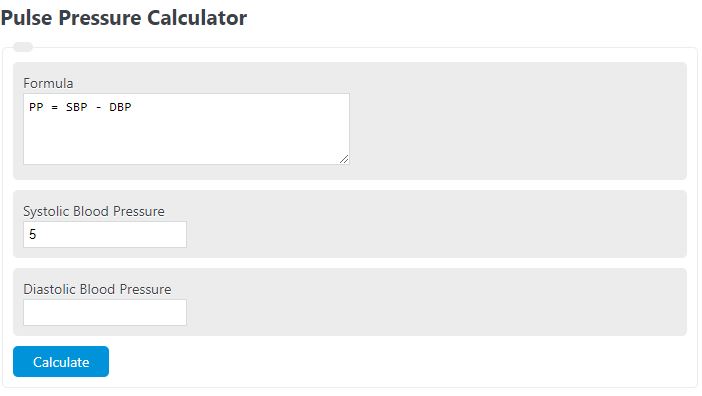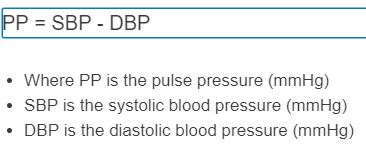Enter your systolic blood pressure and diastolic blood pressure into the calculator to determine your pulse pressure.
- MAP Calculator (Mean Arterial Blood Pressure)
- Max Heart Rate Calculator
- CPP Calculator
- Osmotic Pressure Calculator
- HCT Calculator
- TPR Calculator
- Pulse Repetition Frequency Calculator
Pulse Pressure Formula
The following formula is used to calculate a pulse pressure.
PP = SBP - DBP
- Where PP is the pulse pressure (mmHg)
- SBP is the systolic blood pressure (mmHg)
- DBP is the diastolic blood pressure (mmHg)
To calculate the pulse pressure, subtract the diastolic pressure from the systolic pressure.
Pulse Pressure Definition
Pulse pressure is defined as the difference between systolic and diastolic blood pressures.
Pulse Pressure Example
How to calculate pulse pressure?
- First, measure the SBP.
Measure your systolic blood pressure.
- Next, measure the DBP.
Measure your diastolic blood pressure.
- Finally, calculate the pulse pressure.
Subtract the DBP from the SBP to calculate the pulse pressure.
FAQ
Pulse pressure is a measure of the difference between systolic blood pressure and diastolic blood pressure.
Healthy pulse pressures are considered to be between 40 and 60 mmHg.

